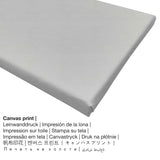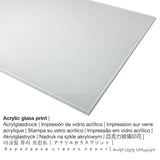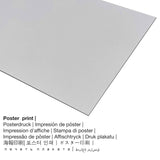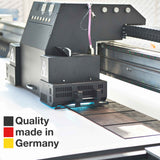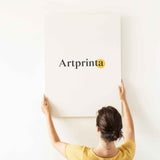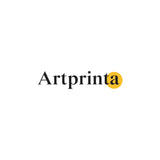Peter Paul Rubens, 1617 - Otu nwoke na-akpacha ihe n'akụkụ ụgbọ ala, ụlọ ọrụ ugbo n'azụ - mbipụta nka mara mma.
Ụtụ gụnyere. Mbupu gbakọrọ na ndenye ọpụpụ.
A Man Threshing Beside a Wagon, Farm Buildings Behind nke nwoke na-ese ihe kere Peter Paul Rubens in 1617. The version of the artwork was painted with the size: 25,4 x 41,4 cm. Red, black, blue, green, and yellow chalk, with touches of pen and brown ink, on pale gray paper was applied by the European painter as the medium of the artpiece. The piece of art is part of the collection of The J. Paul Getty Museum, which is part of the J. Paul Getty trust and is one of the world's largest arts organizations worldwide. It seeks to inspire curiosity about, and enjoyment and understanding of, the visual arts by collecting, conserving, exhibiting, and interpreting works of art of outstanding quality and historical importance.. With courtesy of Ụlọ ihe ngosi nka nke J. Paul Getty (public domain license).Creditline of the artwork: . Besides, the alignment is landscape and has a ratio of 16 : 9, which implies that the length is 78% longer than the width. Peter Paul Rubens was a male diplomat, painter from the Netherlands, whose style can be classified as Baroque. The Baroque artist was born in 1577 in Siegen, North Rhine-Westphalia, Germany and passed away at the age of 63 Na 1640 na Antwerp, Antwerpen Province, Flanders, Belgium.
What does the website of the The J. Paul Getty Museum write about the artwork made by Peter Paul Rubens? (© - by The J. Paul Getty Museum - Ụlọ ihe ngosi nka nke J. Paul Getty)
While this wagon recurs in several paintings, Peter Paul Rubens may have intended this drawing as an independent work of art, rather than a study. Although its composition is simple, this humble genre scene displays Rubens's characteristic lively technique. The sharp perspective, unusual rear view, and lack of alignment between front and rear axles draw the viewer into the space. The splayed side rails and wheel spokes all thrust outward in repeating lines, charging the stationary wagon with energy. Rubens's experiments with different positions for the rustic wagon and the farmer's flail further increase the effect of motion and symmetry.
Rubens varied both his materials and his technique to give the scene immediacy and vigor. The man's red shirt adds to his sense of animation and becomes a focal point of the drawing. Subtle highlights appear in other colors of chalk: yellow inside the wagon, a bit of blue on the barn roof, and touches of brown on wagon wheels and the ground. Rubens's chalk strokes ranged from the stronger, more precise forms of the wagon, whose iron bands and nails are accented in pen and ink, to the light, rapid, strokes employed for the stable and hay.
Ozi ahaziri na nka
| Aha nke ihe nka: | "A Man Threshing Beside a Wagon, Farm Buildings Behind" |
| Nhazi nka nka: | sere |
| Okwu mkpokọta: | nka ochie |
| Nhazi oge: | 17th narị afọ |
| Afọ nka: | 1617 |
| Afọ nka: | 400 afọ |
| Ọkara nke ihe osise izizi: | red, black, blue, green, and yellow chalk, with touches of pen and brown ink, on pale gray paper |
| Nha izizi (ọrụ nka): | 25,4 x 41,4 cm |
| Ụlọ ihe ngosi nka: | Ụlọ ihe ngosi nka nke J. Paul Getty |
| Ebe ngosi nka: | Los Angeles, California, Njikota Obodo Amerika |
| URL nke ihe ngosi nka: | www.getty.edu |
| License: | ngalaba ọha |
| Site n'aka: | Ụlọ ihe ngosi nka nke J. Paul Getty |
Ozi ndabere izugbe gbasara onye na-ese ihe
| Ihe nkiri: | Peter Paul Rubens |
| Aha utu aha: | Pedro Pablo de Rubenes, rubens petrus paulus, Ruben's, Rubens d'Anversa, Pietro Paolo Rubens, Sir P. P. Rubens, Pierre Paul Rubbens, Rubenso fiamengo, Reuben, Pietro Paolo Rubbens, Rubens Sir Peter Paul, P. P. Rubbens, Rubenns Peter Paul, Rubens Pietro Paolo, Pieree Paul Rubens, Pedro Paulo Rubbens, Rupens, Pierre-Paul Rubens, Rubens P.P., Rubens P. P., Rubens ou sa manière, Petro Paulo Rubes, Ruebens Peter Paul, P. Paul Rubens, Rubens Peeter Pauwel, P.P. Rubens, Bubens, Peter Paul Reubens, Pietro Paulo Rubens, P. Rubbens, Paulo Rubbens, Peter Paolo Rubens, Rubeen, Ruben Peter Paul, Ribbens, Pieter Paul Rubbens, P. P. Rubens, Rubenes, Piere Paul Rubens, P. Paulo Rubbens, Rubens Pieter Paul, P: P: Rubbens, Paul Rubens, Pedro Pablo Rubenes, P.P. Rubbens, Paolo Rubens, Rhubens, Peter Paul Rubens, Sir P.P. Rubens, Pieter Paulo Rubbens, rubens p. p., P. Paolo Rubens, rrubes, Rubens Pietro Paolo, Petrus Paulus Rubens, Rubens Sir, P.o Pablo Rubens, Rubens Peter Paul, Sir P. Reuben, Pietro Paolo, Rurens, Pet. Paul Rubens, Rubens Peter Paul Sir, Buddens, petrus paul rubens, Rubenns, Ruvenes, Sir P.Paul Rubens, Rubben, Ruebens, Rubens, Pierre-Paul Rubbens, Pablo Rubes, P. Pauel Rubens, Pietropaolo Rubenz, P. Rubens, Rubens ou dans sa maniere, P.P. Rubeens, Rubin, Pierre Paul Rubens, Petro Paulo Rubbens, Ubens Fiammingo, P.P Rubens, Pierre Rubens, P. Reuben, Rubbens, Pieter Paulus Rubbens, Peter Poulo Ribbens, Pietro Pauolo Rubens, P. P. Reubens, PP. Rubens, Ruwens, Petrus Paulus Rubbens, Paul Reubens, P. Ribbens, Petri Paulo Rubbens, P. Paulus Rubbens, Ruvens, Rubens Sir Peter Paul Flem., Rubins, Ruuenes Peter Paul, Rubens Pierre-Paul, Sir Peter Paul Rubens, Petro Paul Rubens, Rubens Pieter-Pauwel, Rubens Peter Paul, רובנס פטר פאול, pieter paul rubens, Pietro Robino, Ruben, Sir P. Paul Rubens, P.-P. Rubens, רובנס פטר פול, Pietro Pauolo, Reubens, P. v. Rubens, Chev. Pet. Paul. Rubens, Pietro Paolo Fumino |
| Gender: | nwoke |
| Obodo onye nka: | Dutch |
| Ọrụ nke onye na-ese ihe: | ese foto, diplomat |
| Mba onye si: | mba netherland |
| Nhazi nke onye nka: | nna ukwu ochie |
| styles: | Baroque |
| Oge ndu: | 63 afọ |
| Afọ amụrụ: | 1577 |
| Obodo amụrụ: | Siegen, North Rhine-Westphalia, Germany |
| Nwuru: | 1640 |
| Nwụrụ na (ebe): | Antwerp, Antwerpen n'ógbè, Flanders, Belgium |
Nhọrọ ihe dị
Anyị na-enye ụdị nha na ihe dị iche iche maka ngwaahịa ọ bụla. Ị nwere ike ịhọrọ n'ime nhọrọ nhazi ngwaahịa ndị a:
- Bipụta na iko acrylic (nke nwere ezigbo mkpuchi iko): The acrylic glass print, which is often described as a plexiglass print, transforms an original artwork into beautiful décor. With an acrylic glass fine art print sharp contrasts and small details will be more recognizeable with the help of the very subtle gradation in the print. Our acrylic glass protects your chosen art replica against sunlight and heat for many more years.
- Aluminom dibond mbipụta (ọla): An Aluminium Dibond print is a print with a true effect of depth. Its non-reflective surface structure creates a modern look. The white and bright parts of the work of art shine with a silk gloss but without the glare.
- Mbipụta kwaaji: The UV printed canvas stretched on a wood frame. A canvas of this work of art will let you turn your individual art print into a large artpiece as you know from galleries. The great advantage of canvas prints is that they are relatively low in weight, which implies that it is easy and straightforward to hang your Canvas print without extra wall-mounts. That is why, canvas prints are suited for any type of wall in your house.
- Poster (akwa akwa akwa): The poster is a UV printed flat canvas with a slightly rough finish on the surface, that reminds the original version of the artwork. Please bear in mind, that depending on the absolute size of the canvas poster print we add a white margin of around 2-6cm round about the print motif to facilitate the framing with your custom frame.
Banyere akụkọ
| Nkewa ngwaahịa: | ọmarịcha nka |
| Mmeputakwa: | dijitalụ mmeputakwa |
| Usoro nhazi: | Mbipụta UV / dijitalụ |
| Mmalite nke ngwaahịa a: | German mmepụta |
| Stockdị ngwaahịa: | a na-achọ |
| Eji ngwaahịa emebere: | ihe ndozi mgbidi, foto mgbidi |
| Ndozi onyonyo: | nhazi odida obodo |
| Oke akụkụ: | ogologo: obosara 16:9 |
| Ntụgharị nkọwa akụkụ: | ogologo bụ 78% ogologo karịa obosara |
| Akụrụngwa dị: | mbipụta akwụkwọ mmado (akwụkwọ kwaaji), mbipụta kanvas, mbipụta enyo acrylic (nwere ezigbo mkpuchi iko), mbipụta ọla (aluminium dibbond) |
| Ọdịiche dị n'okirikiri akwa akwa akwa (akwa akwa): | 90x50cm - 35x20", 180x100cm - 71x39" |
| Mpempe iko acrylic (nwere ezigbo mkpuchi iko) nha dị iche iche: | 90x50cm - 35x20" |
| Mpempe akwụkwọ mmado (akwụkwọ kwaaji) nha: | 90x50cm - 35x20" |
| Mbipụta nke aluminom: | 90x50cm - 35x20" |
| Igwe onyonyo: | na-enweghị etiti |
Nkwupụta iwu: We try everything to depict our products in as much detail as possible and to illustrate them visually in our shop. Although, the tone of the print products and the imprint may differ somehwat from the image on your screen. Depending on the screen settings and the condition of the surface, color pigments might not be printed 100% realistically. Given that our fine art prints are printed and processed manually, there may also be slight differences in the motif's size and exact position.
© echebe nwebiisinka - Artprinta.com


